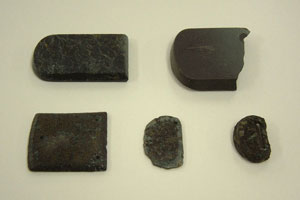公開日 2021年11月12日
Nara Period
The Implementation of Legal Codes
After the political reform of Taika, the legal code entitled Taiho Ritsuryo was implemented to consolidate the foundation of the nation, aiming at building a centralized imperial state in the first year of the Taiho era (701).It consisted of Ryo, the laws to obey, and Ritsu, the penal regulations in case people offended.In 710, the new capital was opened in Nara, modeled after the Chinese capital of the Tang dynasty. Here started the Nara period, which lasted 74 years.
The provincial capital was designated in each province and a network of roads connecting Nara to other parts of Japan was improved to establish a centralized nation.In 741, Emperor Shomu promulgated an imperial edict to erect a provincial temple and convent in each province to strengthen the nation aided by Buddhist teaching.
The remains of the provincial temple of Sagami can be seen in Ebina.There were various opinions regarding where the capital of the Sagami province was located.The recent excavation and research finally concluded that it was placed in the Shinomiya area in Hiratsuka.In Isehara the remains of villages of this period were discovered in many sites including Ichiba (Higashi-Otake), Tennobara (Numame), Ushirohara (Kushihashi), and Miyanomae (Itado) to prove that a large number of people lived here.Together with pit dwellings, the remains of the buildings with raised floors were also found. Assumedly, storages stood in a row to store rice, fabrics, local specialties, and so forth for the tax to the central government as the taxation system started in this period.

- The belt buckles excavated from various sites of Isehara showed the ranks of the government officers who wore them.
The one on the upper left is 3.4cm wide and 5.5cm long.
Next⇒Heian Period
- Geogaraphical Features of Isehara
- Paleolithic Period
- Jomon Period
- Yayoi Period
- Kofun (Tumulus)Period
- Nara Period
- Heian Period
- Kamakura Period
- Muromachi Period
- Civil War Period
- Edo Period
- Meiji, Taisho, and Showa Periods
Previous⇒Kofun (Tumulus)Period


